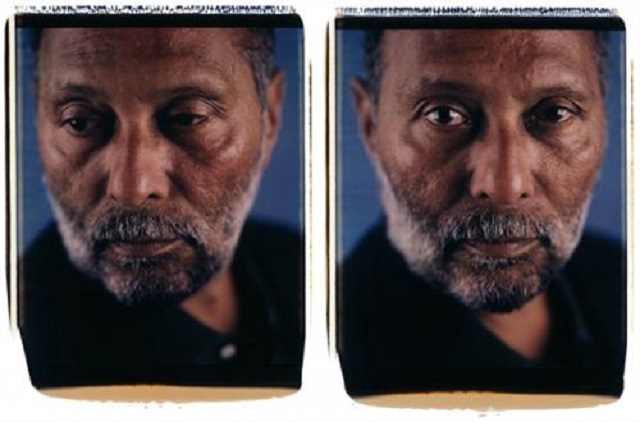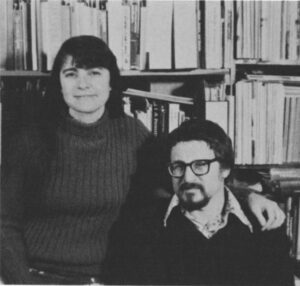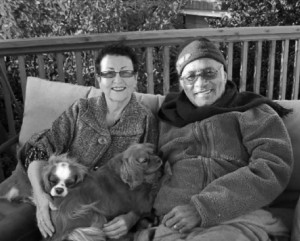by Gene Grabiner*
 Critics have long been concerned about the potential for government abuse and overreach, as well as the desire of officials to conduct civic affairs beyond public scrutiny. As moral philosopher Jeremy Bentham cautioned, “secrecy, being an instrument of conspiracy, ought never to be the system of a regular government.” Gore Vidal observed that “Harry Truman replaced the old republic with a national-security state, whose sole purpose is to wage perpetual wars, hot, cold, and tepid.” Jurist William O. Douglas revealed that oppression, like nightfall, descends imperceptibly: “In both instances, there’s a twilight where everything remains seemingly unchanged, and it is in such twilight that we must be aware of change in the air, however slight, lest we become unwitting victims of the darkness.”
Critics have long been concerned about the potential for government abuse and overreach, as well as the desire of officials to conduct civic affairs beyond public scrutiny. As moral philosopher Jeremy Bentham cautioned, “secrecy, being an instrument of conspiracy, ought never to be the system of a regular government.” Gore Vidal observed that “Harry Truman replaced the old republic with a national-security state, whose sole purpose is to wage perpetual wars, hot, cold, and tepid.” Jurist William O. Douglas revealed that oppression, like nightfall, descends imperceptibly: “In both instances, there’s a twilight where everything remains seemingly unchanged, and it is in such twilight that we must be aware of change in the air, however slight, lest we become unwitting victims of the darkness.”
Edwin Black has documented the Nazi state’s alliance with IBM and its reliance on that corporation’s data processing technology for selective repression. Given Edward Snowden’s recent revelations, we now know that the National Security Agency (NSA), a section of the Department of Defense, has been collecting metadata (phone numbers, call times and duration) on all Americans, and using its clandestine PRISM mass electronic surveillance data-mining program to record, directly from servers of Internet providers, the content of certain emails or entire email boxes. PRISM may have scooped up all Facebook content, and the New York Times reported that Martin E. Dempsey, chairman of the Joint Chiefs of Staff, met in Silicon Valley with executives at Facebook, Microsoft, Google, and Intel to discuss how the companies would collaborate with the government in its intelligence-gathering efforts. The NSA has easy access to the Cloud, which increasingly houses people’s entire hard drive backups.
Given the ongoing refusal of congressional Republicans to work across the aisle, the initial response to the NSA disclosures has been unusually bipartisan. Karl Rove argued that NSA-style spying on the people is needed to “keep the nation safe.” Congressman Eric Cantor (R-Virginia) says that “if anyone were to violate the law by releasing classified information outside the legal avenues, certainly that individual should be prosecuted to the fullest extent of the law.” According to Senator Diane Feinstein (D-California), Edward Snowden “committed an act of treason” and she is upset only insofar as he leaked the fact that we have been spied upon for years. Speaker of the House John Boehner (R-Ohio), as well as Senators Ben Nelson (D-Florida) and Saxby Chambliss (R-Georgia), echoed these comments. Peter King (R-New York), chair of the House Homeland Security Committee and a former IRA supporter, called for the prosecution of Glenn Greenwald and other journalists who cover security leaks.
Nonetheless, critical voices have emerged. Tea Party Congressman Justin Amash (R-MI) and John Conyers (Michigan Democratic Congressional Progressive Caucus member) introduced a House amendment to a July 2013 Pentagon spending bill that would bar the NSA from spending funds for surveillance on any citizen who was not already the subject of an investigation. The Amash-Conyers anti-NSA amendment lost by twelve votes, 205–217. Eighty-three House Democrats and 134 House Republicans voted against it.
• • •
Edward Snowden’s NSA revelations have clouded the political fault lines on the issue of violations of the Fourth Amendment. Tea Party luminary Rand Paul has staked out an anti-NSA populist-libertarian position and has sponsored the Fourth Amendment Restoration Act. In effect, it states that the Fourth Amendment shall not be construed to allow any government agency to search phone records of Americans without a warrant based on probable cause. This constitutional doctrine conflicts with Justice Antonin Scalia’s originalism (“what the Founding Fathers intended”), wherein the animating principle behind the Fourth Amendment is to protect personal property, and thus only prevents “unreasonable searches and seizures” of our “persons, houses, papers, and effects.” Without a valid judicial warrant, police cannot attach a GPS tracker to a person’s car and monitor his movements (United States v. Jones). However, it would be permissible to wiretap a person’s conversations by physically attaching a monitoring device to the phone company’s line on a public street, so long as a person’s home is not entered or his/her property trespassed upon.
With Big Brother watching, there is a need for a broader view of Fourth Amendment privacy protections. Metadata make it unnecessary to violate “persons, houses, papers, and effects against unreasonable searches and seizures.” They are used to identify patterns from the external aspect of information. Instead of listening to the content of your phone calls, it captures the fact that you made a call, to whom and where, and for how long, all the while registering your physical location. In short, the external aspect has multiplied enormously, seemingly overwhelming the internal. Originalism in constitutional law fails miserably in the face of this technological innovation, since the Founders had no plausible notion of what is at issue: with an e-trail containing all the information needed to keep track of people, there is no need to listen to their conversations or enter their houses.
• • •
Those who would give up essential liberty to purchase
a little temporary safety deserve neither liberty nor safety
—Benjamin Franklin
Scarcity is a property of capitalist markets. Despite production in abundance, it is not an abundance of human needs fulfillment. As a result, there is a scarcity of healthy ecosystems, nutritious food, crops free of genetic tampering, meaningful employment, housing, peace, and quality public education. According to Nobel-laureate economist Paul Samuelson, “economics is a study of how people and society end up choosing with or without the use of money, to employ scarce productive resources that could have alternate uses” [emphasis added]. Elected representatives and members of the media invoke the scarcity principle while discussing NSA snooping whenever they say that we must balance safety against liberty, usually with some liberty placed on the sacrificial altar. At the recent Netroots Nation 2013 conference, former House Speaker Nancy Pelosi (D-California) was booed when she said that as far as Snowden is concerned, “he did violate the law in terms of releasing those documents. The fact is, we have to have a balance between security and privacy” [emphasis added].
This market analogy for scarcity, which persists within the US juridical and ideological tradition under the rubrics of “balancing of interests” and “balancing of rights,” is a prestidigitation that tacitly underlies utilitarian domain assumptions (i.e., “if you want security, you must compromise your rights”). The US Supreme Court first asserted this balancing test in Schenck v. United States (1919), in which it was determined that speech can be restricted if it represents a “clear and present danger,” such as “shouting fire in a theater.” That case expanded the power of the 1917 Espionage Act to censor free speech, with the “clear and present danger” being the publication and distribution of a pamphlet that opposed the draft and US entry into World War I. Writing for the majority, Justice Oliver Wendell Holmes argued that the exercise of free speech is contextual. Stating that conscription is tantamount to “involuntary servitude” during peacetime is protected speech, but doing so during wartime is not, and could be construed as an act of national insubordination—a substantive evil that Congress has a right to prevent.
Of course, reason dictates that no one would deliberately cause panic by falsely yelling “fire” in a crowded theater. Yet this fiction has contributed to “legal” government censorship, “legal” government trimming of the right of free speech, and the buildup of thought justifying “legal” NSA snooping, in violation of the First, Fourth, Fifth, Ninth, Tenth, and Fourteenth Amendments, all of which are major cornerstones of American democracy. Although by 1969 the “imminent lawless action” test achieved ascendancy, given the dominance of antiterrorism ideology, our “context” remains one of permanent war.
• • •
In a period of deepening austerity in the United States, even greater corporate dominance of politics after the Citizens United decision, and governmental paralysis in Washington (in the words of Jimmy Carter, “we do not now have a functioning democracy”), we need effective theoretical tools to analyze a mode of governance that relies upon mass surveillance and is operationalized through secret courts. This spying is a signpost of democracy lost, or at least in profound crisis. To reclaim ourselves from this situation will require an organization or movement capable of challenging intertwining state-corporate incursions.
Political society lies with the people and is invariably the source of real politics. For a new birth of freedom to prevail, we must claim democracy at a higher level. To foreclose the possibility of neofascist options, we, the people, must have a sound and progressive theory of that new birth of freedom, and perhaps a People’s Democratic Party.
* Gene Grabiner is SUNY Distinguished Service Professor Emeritus (email: genegrab1@verizon.net ). He was a founding member of this journal in 1974, when it was called Crime and Social Justice. This piece is a shorter version of an article that will appear on an upcoming issue of our journal.










